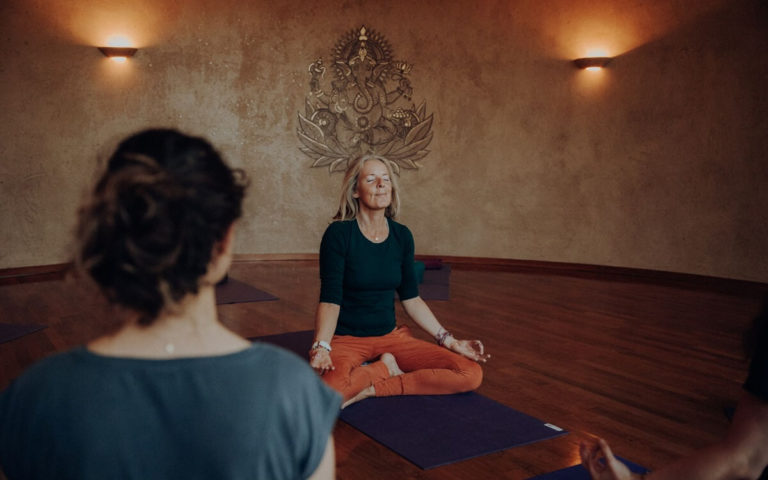Both Ayurvedic medicine and yoga have their origins in India. They share the common goal of the holistic well-being of people as individuals. Ayurveda combines mental and physical health, while yoga focuses primarily on the harmony of body, mind and soul. In combination, Ayurveda and yoga focus on a holistically healthy lifestyle and complement each other perfectly.
Yoga and Ayurveda
Yoga is an important part of the Ayurvedic lifestyle. Its origins can be traced back thousands of years to the Vedic civilization of India.
Cross-references in written documents provide evidence of the close connection between the two practices. Yoga and Ayurveda therefore not only come from the same source, but also complement each other perfectly.
Ayurveda is about increasing physical and mental well-being, while yoga focuses on the mental and spiritual. Yoga also promotes the strength, flexibility and health of your body. The word "yoga" can be translated as connection or union.
This primarily concerns the connection between body, mind and soul, i.e. the pursuit of physical peace of mind. In comparison, Ayurveda focuses on balance on a physical level. Living in harmony with nature and strengthening physical strength and vital energy are the primary goals.
The traditional writings on yoga contain numerous recommendations for a healthy, Ayurvedic lifestyle. The associated techniques for cleansing your body and proper nutrition have their origins in Ayurveda. Exercise, meditation and breathing exercises are also part of the holistic approach of Ayurveda, which in turn can be found in yoga.
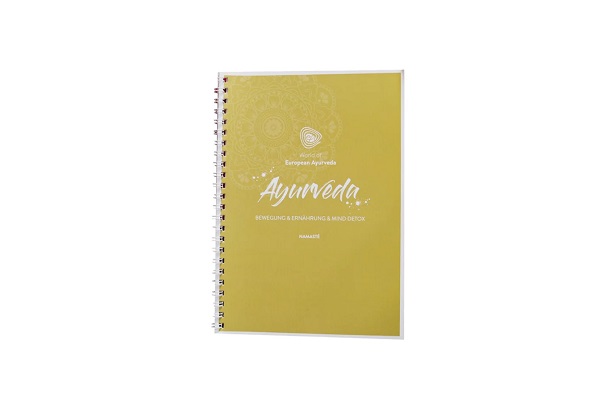

Get active with the European Ayurveda® Diary Exercise, Nutrition & Mind Detox
All beginnings are difficult, you could say - or you could look at it from a different perspective and look forward to new experiences. This diary contains tasks and affirmations for 7 days. So that you feel comfortable and secure in your body!
The pillars of yoga
In yoga, a basic distinction is made between three different pillars:
- Yoga asanas
- Pranayama
- Meditation
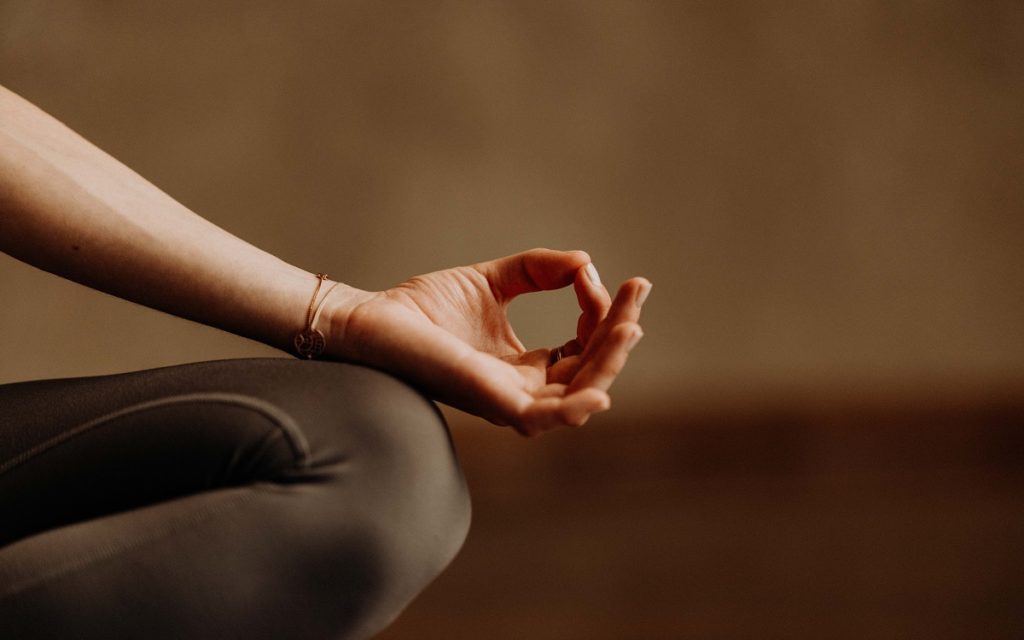

Only the combination of all three approaches makes a yoga session holistic. Asanas are "the surface on which we sit". In other words, the sitting positions used for meditation, such as the lotus position. Meanwhile, all physical yoga postures are asanas. The positive effects on you and your body are many and varied:
- Muscles are activated and strengthened
- Organs and joints are better supplied with blood
- Better mobility
- Your spine is straightened
- Your metabolism is stimulated
- Your circulation is stabilized
- Strengthens your body's ability to detoxify
In addition to the physical benefits, yoga also has a positive effect on your psyche. Your energy flow, known as prana in Ayurveda, is activated, which helps to harmonize the chakras. With the right yoga asanas, you can release tension in your body, which ensures a positive mindset and more energy in everyday life.
In addition to asanas, holistic yoga also includes pranayama and meditation exercises. Pranayama includes the different breathing techniques used during the asanas. Meditation helps you to get to know your body better and learn how to focus on it.
With the right practice of asanas, pranayama and meditation, doshas can be balanced and brought back into equilibrium. Depending on the composition of your constitutional types, there are yoga exercises that are particularly suitable for you depending on your dosha type.
Yoga for the Vata type
The Vata type is the principle of movement, which also includes mental agility and quick perception. From a physical point of view, Vata is mainly found in the breath, gastrointestinal tract and excretions. A dominant Vata often manifests as constipation, flatulence, arthritis or lower back pain.
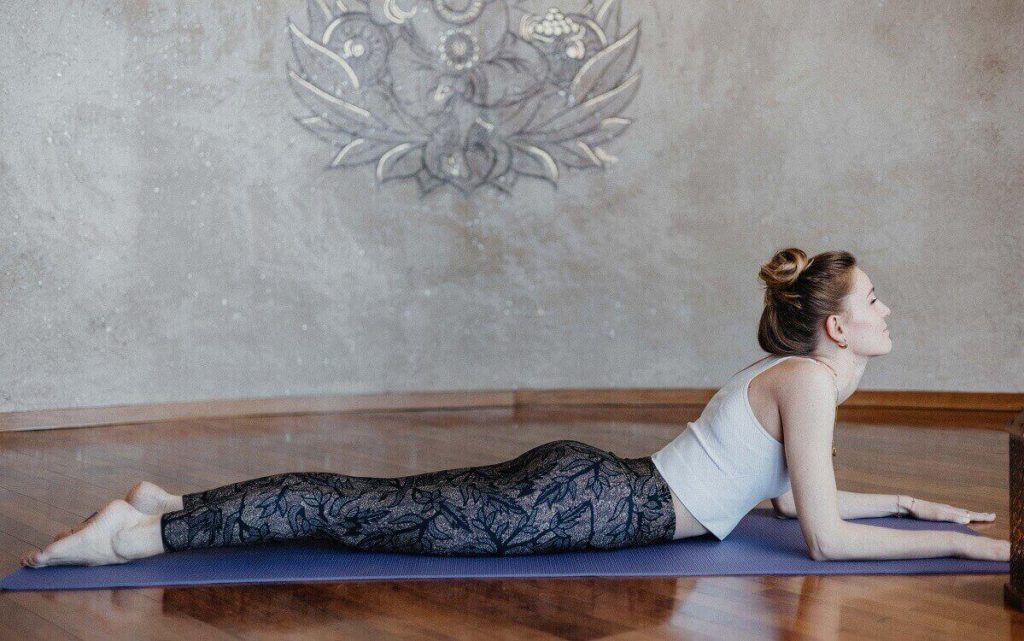

A combination of gentle twists and conscious breathing as well as forward bends have a calming effect on your nervous system. As a Vata type, you tend to be stiff, which can be relaxed with slow sun salutations and flowing, calm breathing. Calm breathing to warm up is a must for Vata types during yoga.
The best yoga exercises for the Vata type include
- For more warmth: Cobra, Grasshopper, Warrior I, Boat
- For more stability and focus: Tree, Warrior II
- For digestion: twists while lying down
- For more peace of mind: Alternate breathing, forward bends
- For relaxation: Savasana, reclining butterfly
Additional tips for Vata yoga:
- Allow yourself enough time to arrive at the beginning and take your time to get involved in the upcoming yoga session
- Perform the postures slowly and calmly and try to hold them for a long time
- Focus on your stance and balance posture
- Also try meditation techniques such as Tummo meditation for warmth from within
Yoga for the Pitta type
The dosha Pitta is the principle of transformation and manifests itself on a physical level primarily in digestion, i.e. the transformation of food. On a mental level, Pitta manifests itself through ambition, assertiveness and a sharp intellect.
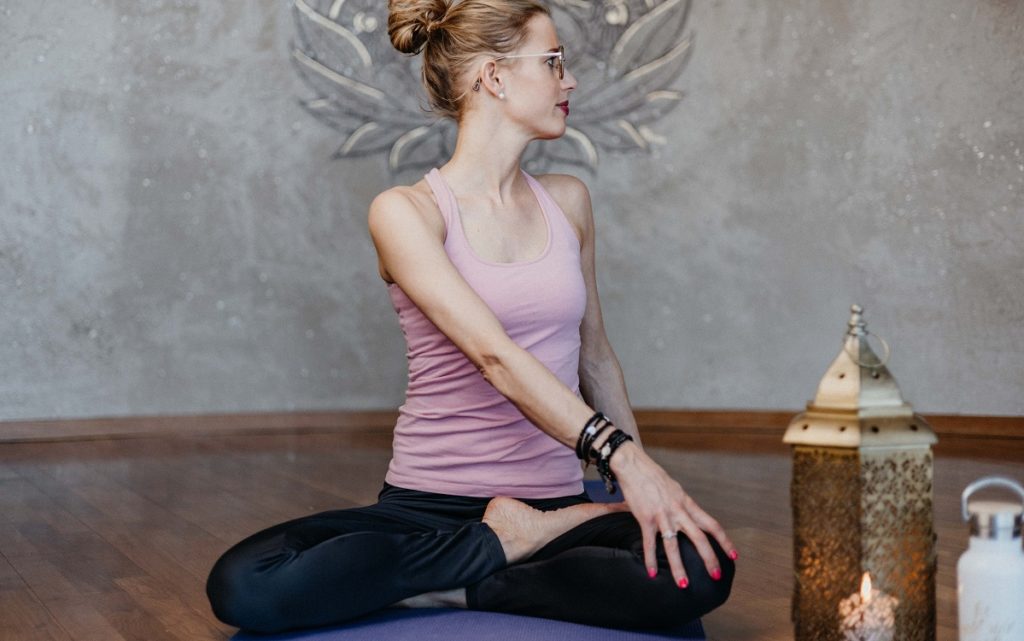

As a Pitta type, you tend to be hot-tempered by nature, which can lead to fever, inflammation, hyperacidity of the stomach or heavy sweating. This makes cooling and balancing yoga all the more important for Pitta types. Slow, seated twists balance your digestion and cleanse your liver.
The best yoga exercises for the Pitta type include:
- For a "cool" head: bend forward, Sitali breathing, half shoulder stand, Viparita Karani (legs against the wall)
- To balance fiery digestion: triangle, twists while sitting, half moon
- For relaxation: fish, cobra, savasana, pausing and reflecting between exercises, seated meditation
Additional tips for pitta yoga:
- Perform your asanas with particular awareness
- Build in sufficient rest periods in which you feel yourself
- Recognize what you have achieved
Yoga for the Kapha type
The Kapha type stands for stability and structure and keeps your joints and mucous membranes supple on the physical level. On the mental level, it is characterized by patience and compassion. Kapha is prone to colds, flu or blocked sinuses, as well as sluggishness due to a slow metabolism.
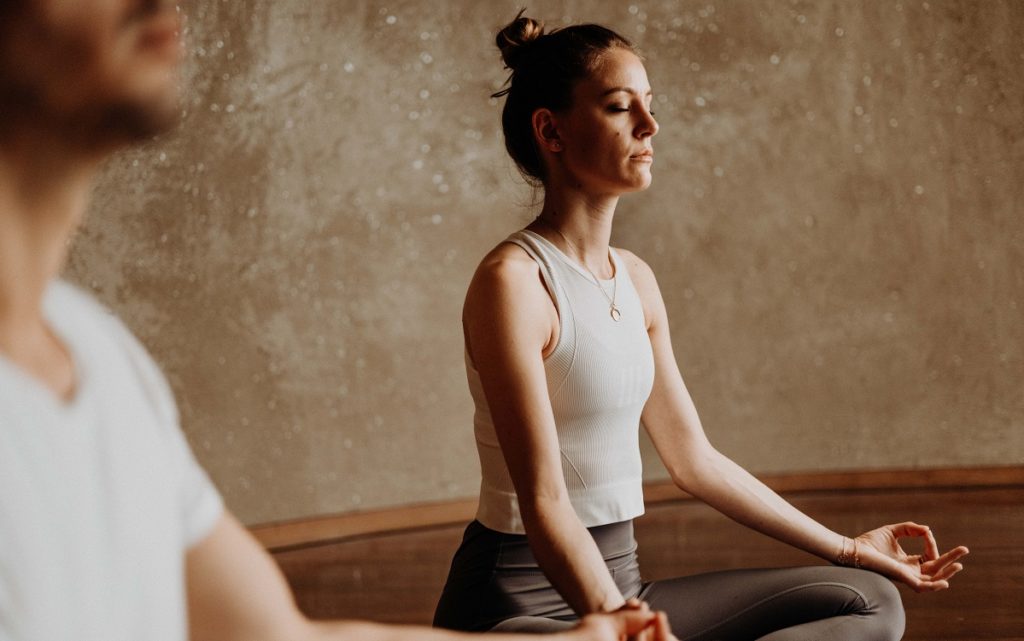

This is also the reason why the yoga exercises for the Kapha type are so different from the other two constitutional types. Yoga for Kapha is dynamic and stimulating as well as warming and relieving, with a focus on letting go.
The best yoga exercises for the Kapha type include:
- For more energy in the body: vinyasas, sun salutations, backward bends such as camel, bow, grasshopper, upward facing dog, inversion postures such as handstand, shoulder stand, peacock feather
- For more energy of the mind: Lion, Kapalabhati, Breath of Fire
- For mental relaxation: meditation while walking, meditation with focus on breathing through the right nostril
Additional tips for Kapha yoga:
- Get used to each exercise slowly with the help of simple sequences
- Perform the movements fluidly and powerfully for more energy
- Support your asanas with powerful breathing
Procedure for a holistic cleansing with Ayurveda and yoga
An Ayurvedic yoga journey begins with a consultation with an Ayurveda expert. Your dosha type is determined together and an individual treatment plan is then drawn up. Your specific needs are taken into account and included.


During your stay at our Ayurveda Resort, your diet will also be Dosha-appropriate diet adapted. Healthy dishes are prepared from fresh foods to bring your doshas into balance. A healthy body also has a positive effect on your mind.
In addition to physical cleansing, it is also about your mental relaxation. This is achieved with traditional healing techniques, forgiveness rituals and cures, such as a detox cure. Steam and healing baths as well as forehead oil infusions also play an important role in spiritual cleansing.



